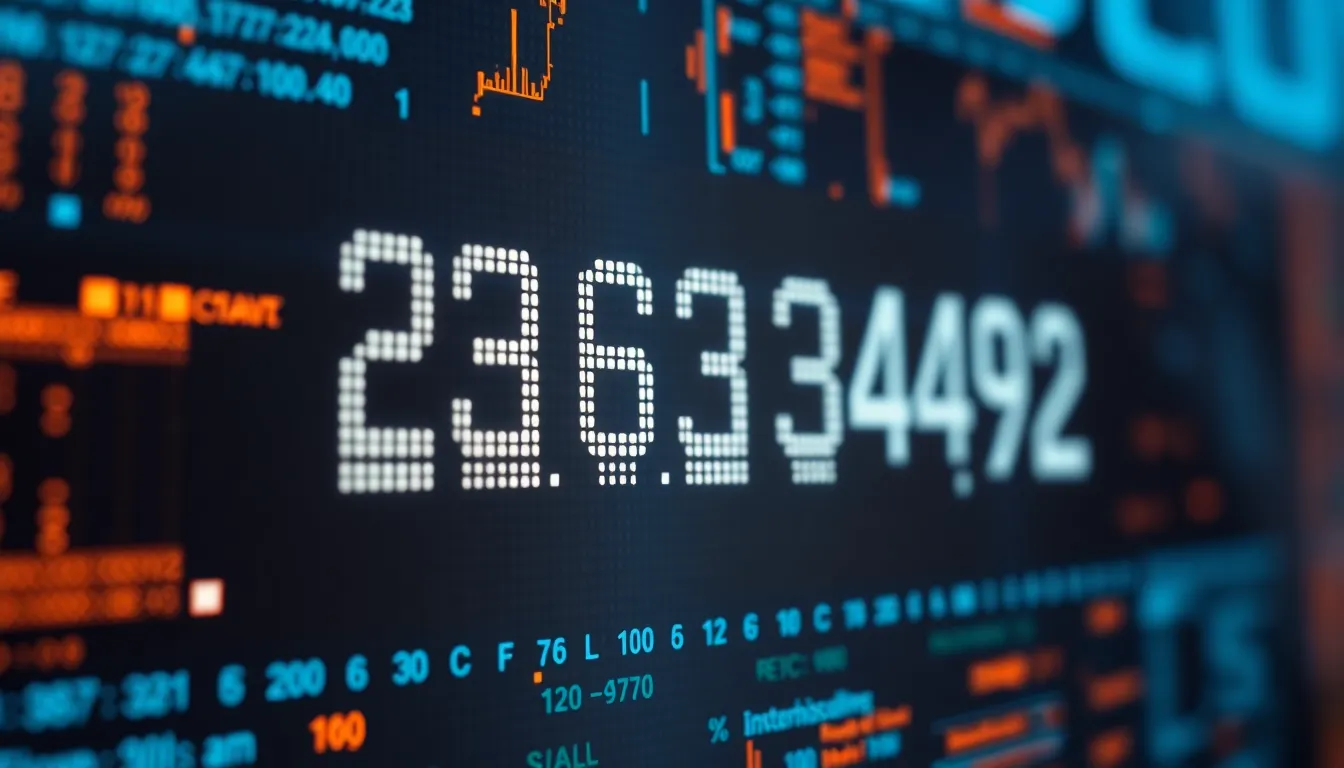Table of Contents
ToggleNumbers often carry more significance than meets the eye, especially when they appear repeatedly or in unexpected places. The sequence 2162334972 has sparked curiosity across various fields, from technology to data analysis. Understanding its relevance can unlock insights into patterns, systems, or even hidden messages.
Exploring 2162334972 reveals how seemingly random numbers can play crucial roles in coding, identification, or encryption. This article dives into the meaning and applications of 2162334972, shedding light on why it matters and how it impacts different industries. Whether you’re a data enthusiast or just curious, uncovering the story behind this number promises intriguing discoveries.
What Is 2162334972?
2162334972 represents a ten-digit numerical sequence with applications in various digital and analytical domains. Its structure and properties lend themselves to specific functions in data systems.
Origin and Meaning
2162334972 originates as a unique identifier often generated through algorithmic processes in computing. The number holds no inherent linguistic meaning but gains significance from its use as a coded reference. Its length and composition suit it for high-capacity indexing and encryption keys in secure digital environments.
Common Uses and Contexts
2162334972 commonly appears in contexts such as database keys, software licensing, and cryptographic functions. It serves as a unique marker in data analysis tools, enabling efficient retrieval and categorization. In technology, it functions as an identifier for devices or transaction records, ensuring precise tracking and validation. The application of 2162334972 in coding frameworks highlights its role in maintaining integrity and security across digital platforms.
How to Identify 2162334972
Identifying 2162334972 involves recognizing its unique numerical pattern and understanding its related variants. These factors assist in distinguishing this specific sequence within various digital and analytical contexts.
Recognizing Patterns
2162334972 presents a distinct ten-digit sequence marked by varying digit repetitions. It begins with “21” followed by a “6,” then a double “3,” and ends with a sequence from “4” to “972.” Noticing the double occurrence of “3” in the middle helps separate it from random numeric strings. This pattern assists algorithms and systems in quickly validating the sequence during database searches or cryptographic operations. Recognizing such patterns enables effective data categorization and reduces errors in automated processing.
Related Numbers and Variations
Related numbers to 2162334972 include sequences that share similar digit clusters or algorithmic origins, such as 2162334973 or 2162334962. These variations typically differ by one or two digits and serve distinct roles in identification, licensing, or transaction records. Detecting these numbers requires attention to subtle digit changes that impact their function. Systems often employ checksum or hash mechanisms to verify these variants, ensuring that each number maintains its uniqueness while fitting within the same identification framework.
Potential Risks and Concerns
Understanding the risks associated with 2162334972 is essential to ensure safe usage across technological and digital contexts. The following sections detail potential scam, fraud, privacy, and security issues linked to this numerical sequence.
Scam and Fraud Possibilities
Scammers may exploit 2162334972 as a forged identifier in fraudulent activities. Impersonating this sequence in transaction records or software licenses can deceive users and systems, leading to unauthorized access or financial loss. Automated systems relying on 2162334972 for validation may fail to detect sophisticated alterations, increasing vulnerability to phishing schemes or data manipulation. Constant monitoring using checksum and hash verification tools reduces the risk of exploitation but does not eliminate the possibility of misuse altogether.
Privacy and Security Issues
The use of 2162334972 as a unique digital key exposes it to privacy risks if improperly managed. Unauthorized parties obtaining this identifier might access sensitive information linked to devices or accounts it represents. Encryption protocols incorporating 2162334972 must maintain robust security to prevent data breaches. Additionally, systems associating this number with personal data require stringent access controls and compliance with data protection regulations. Failure to secure 2162334972 can result in identity theft, unauthorized tracking, or leakage of confidential information.
How to Handle Calls or Messages from 2162334972
Managing communications from 2162334972 requires caution due to its association with potential risks. Following specific steps enhances security and minimizes unwanted interruptions.
Recommended Actions
Verify the origin of calls or messages from 2162334972 before responding to prevent engagement with potential scams. Use call identification apps or contact official sources linked to this number for validation. Avoid sharing personal or financial information during unsolicited interactions. Document suspicious communications by noting date, time, and content to support any necessary investigations. Enable device security features such as spam filters and automatic call blockers to reduce exposure. Update software regularly to maintain protection against exploitation targeting identifiers like 2162334972.
Blocking and Reporting Tips
Block the number 2162334972 on smartphones and landlines to prevent further disruptions. Access the device’s call settings or use third-party security applications for comprehensive blocking options. Report the number to relevant authorities, such as the Federal Trade Commission (FTC) or the local telecommunications provider, to alert them about suspected fraud. Submit complaints through official online portals dedicated to phone scam reporting. Inform workplace IT departments if the number targets company devices, ensuring organizational safeguards. Encourage others to share similar experiences with 2162334972 to help collective monitoring and awareness.
Tools and Resources for Further Information
Accurate tools and reliable resources support deeper understanding and verification of 2162334972. This section highlights key platforms to assist users in identifying, analyzing, and managing the number sequence effectively.
Online Lookup Services
Online lookup services offer comprehensive databases to cross-reference 2162334972, aiding in identification and security checks. Websites like Whitepages, TrueCaller, and NumLookup provide detailed reports on caller IDs and transaction numbers, including geographic origin, associated entities, and user ratings. These platforms support checksum and hash verification functions to detect fraudulent or suspicious patterns linked to the number. By using multiple lookup services, users can confirm legitimacy and reduce risks associated with scams or unauthorized use.
Community Feedback and Forums
Community feedback platforms and specialized forums serve as valuable resources for real-world experiences related to 2162334972. Forums such as Reddit’s r/Scams, BleepingComputer, and specialized data security boards enable users to share encounters, report scam attempts, and exchange advice on managing communications from this number sequence. Active discussion threads also offer updates on emerging threats, mitigation strategies, and tips for verification tools. Engaging with these communities helps users stay informed and implement best practices in handling the number 2162334972 safely.
Conclusion
2162334972 stands as more than just a random sequence of digits. Its role in technology and data management highlights the importance of understanding such identifiers in today’s digital landscape. Staying vigilant and informed about numbers like this helps protect against potential misuse and security threats.
Utilizing verification tools and trusted resources can empower users to navigate communications and data interactions safely. Awareness and proactive measures remain key in managing the risks associated with unique numerical sequences like 2162334972.



